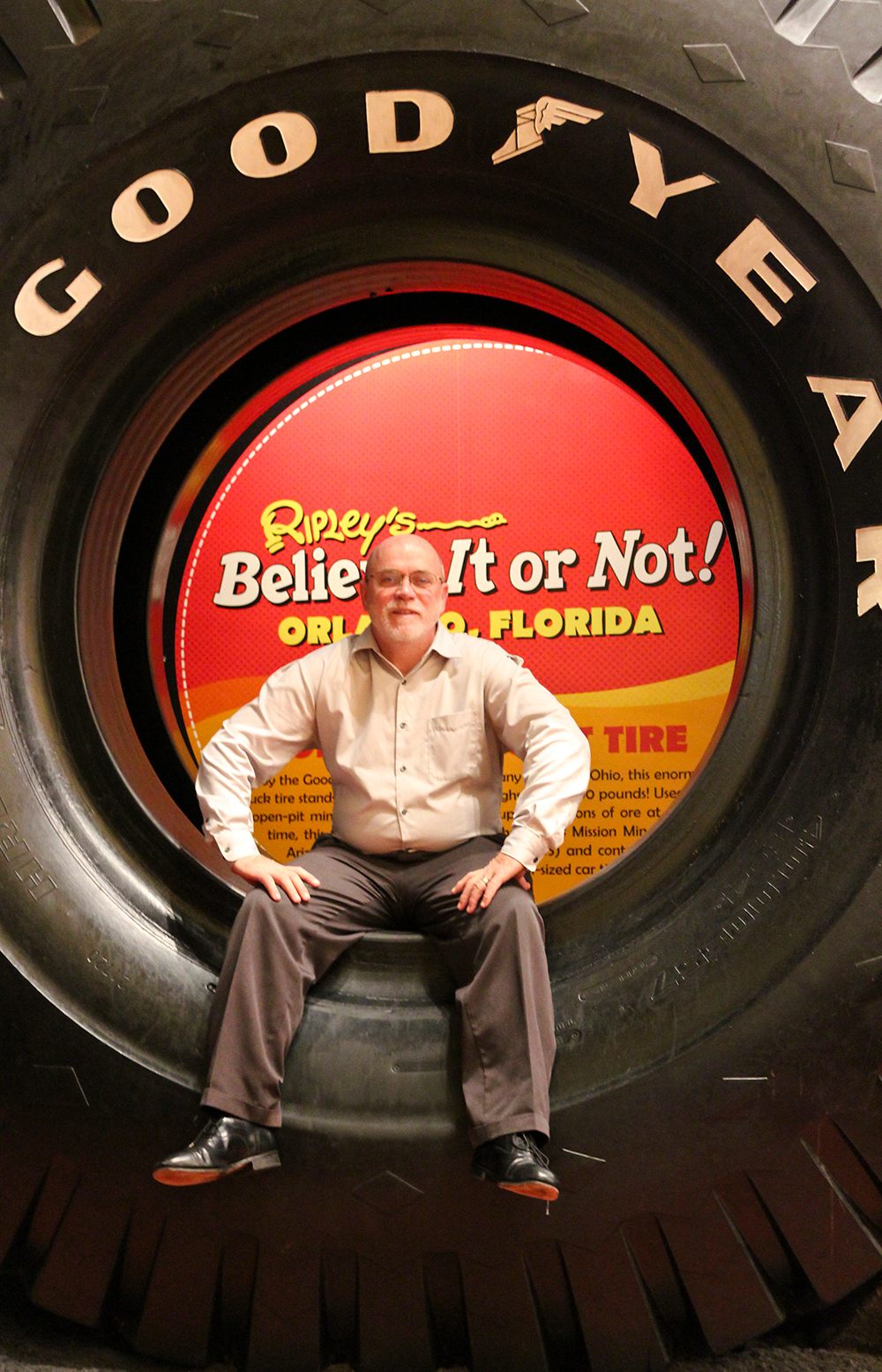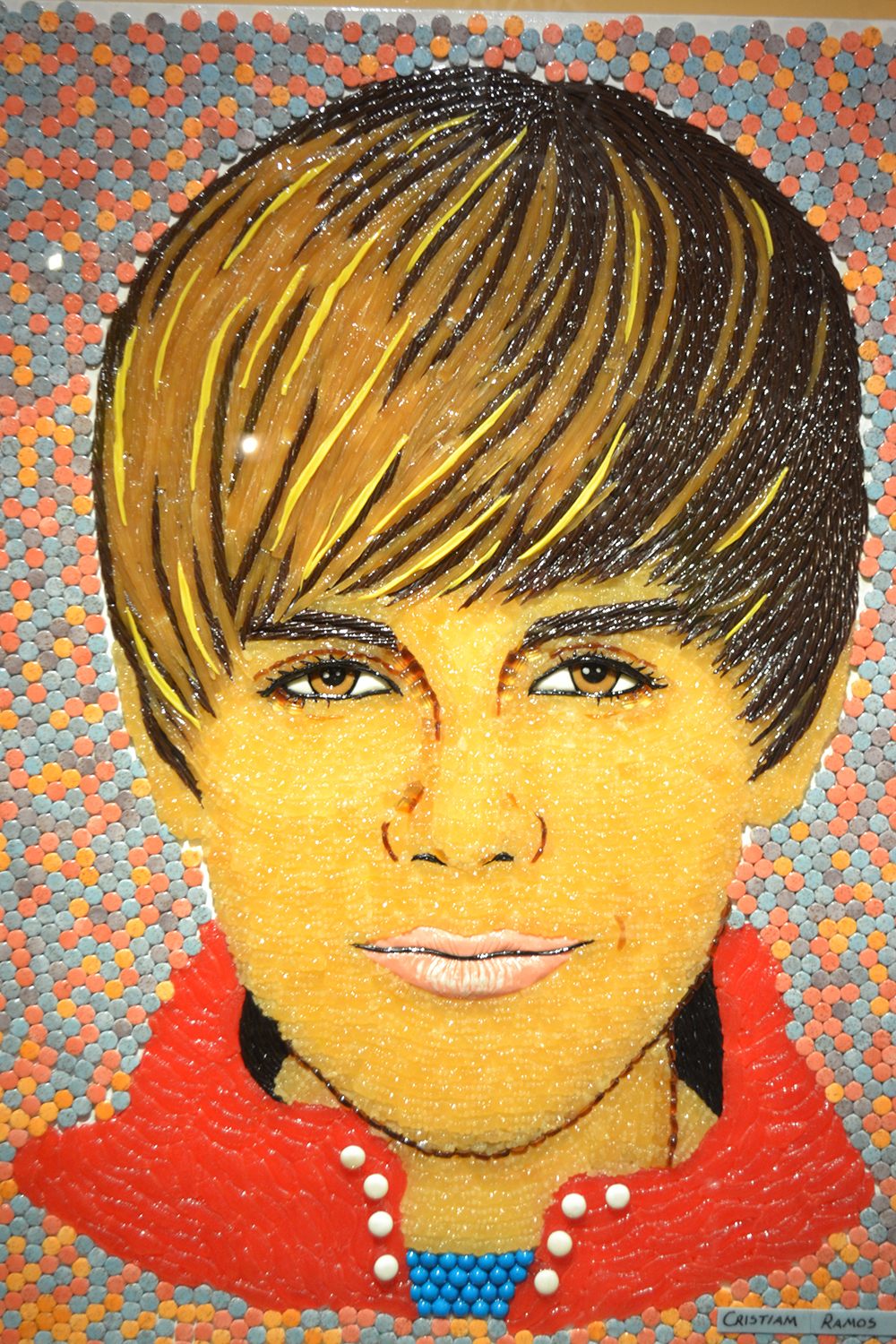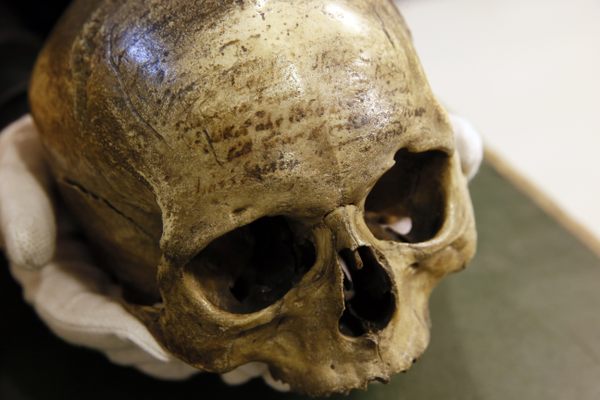Meet the Guy Who Spent 40 Years Curating at Ripley’s Believe It Or Not
Edward Meyer has now worked at the company longer than its founder.

VP of Exhibits and Archives Edward Meyer. (All Photos: © 2016 Ripley Entertainment Inc.)
When a two-headed calf is stillborn on a farm somewhere in Iowa, a local media outlet may or may not produce a short item, depending on the relative busyness of the news cycle. But at Edward Meyer’s office, it’s all hands on deck. As the VP of Exhibits and Archives for Ripley’s Believe It Or Not, it’s Meyer’s job to bring that two-headed calf home.
So what’s it like being the man who has brought over 20,000 items into the collection over a 40-year career? There aren’t many jobs that require knowledge of the shrunken head market or long phone calls to convince a man who built a replica of San Francisco’s Golden Gate Bridge out of toothpicks to sell his creation. Since he first joined Ripley’s as cartoon editor in 1978, these activities have been just another day’s work at the Orlando-based company. “There isn’t a day that goes by when I’m not excited by something,” says Meyer. He describes himself as “Mister Gee Whiz”—a slightly old-timey title for a job that feels like something out of the past.

Robert Ripley.
When Ripley’s Believe It Or Not made its first appearance at the World’s Fair in 1933, it was an “I told you so” moment for founder Robert Ripley. He was a newspaper illustrator whose subjects were “literally and figuratively all over the map,” as Meyer says. But what he was drawing was so strange that it bordered on the unbelievable. People actually addressed letters “To the World’s Biggest Liar.” (Perhaps more surprisingly, the post office seemed to know whom the letters were addressed to.) Creating his empire of odditoriums was a way for Ripley to prove that what he drew in his cartoons were real.
Today, of course, there’s the internet and sites like Snopes.com to take care of concerns like these. Even in his time, Ripley’s focus moved to bringing his assorted holdings to a wider audience. He took human oddities like “the owl man” Martin Laurello, who could turn his head 180 degrees, out of the sideshows and onto Broadway. Meyer said that Ripley made it comfortable and acceptable for people to stare. “You can come to my big fancy theater, pay a quarter, and see some of the strangest people in the world.” Eventually (and thankfully), the idea of putting people on display like animals in a zoo became repellent. Today Ripley’s locations might bring in entertainers to give museum-goers a special treat—sword swallowers or people who can lift weights with their eyes—but only on special occasions.
In addition to 32 odditoriums, Ripley’s also has 3 aquariums, 8 “marvelous mirror mazes,” 3 mini-golf courses, and more. Though the majority of the odditoriums are still run by Ripley’s a few are franchised the fee for which includes the right to borrow items from the Ripley’s warehouse which is located in Orlando. Every new item purchased by Meyer and his team goes through the warehouse before being displayed. At any given time there may be as many as 10,000 items stored there.
Meyer believes humans thrive on curiosity and that the information gleaned off a screen can only do so much. “You’ve heard about it before but here it is,” Meyer says. Sure, people today have seen a lot but Ripley’s trusts that they can keep discovering new things.

One of the Ripley artifacts, a ‘lunar bible’, part of a microfilm bible that was carried to the moon by Edgar Mitchell.
Though he does jump on a plane from time to time, Meyer says that the majority of new items coming into Ripley’s are brought to them. “The really good stuff finds us.” When that two-headed cow is born, they’re often returning phone calls from the farmer—not tracking him down. “People not only want their 15 minutes of fame,” Meyer says. “They feel we’re the best people to give it to them.”
While some items—animals with too many appendages, dinosaurs, mummies, and baseball—never go out of style, Ripley’s does acquire items that could be described as “trendy.” When asked for an example of such an item, Meyer hardly misses a beat before answering, “Justin Bieber.” He says that they have seven “pieces of art” that portray the no-longer-teenage heartthrob. “When I bought them he was the hottest star on the planet and now nobody wants a part of him.” Even space-themed items have their ebbs and flows. When movies about space come out or NASA does something exciting, “the popularity of space artifacts goes up almost overnight.” Then, slowly, people forget why they were ever excited in the first place.
Ripley’s itself feels like an oddity until you realize how much it runs like any other museum. Their items are carefully catalogued. Visitors are occasionally asked to fill out surveys so Ripley’s can figure out which items they should send back to the warehouse and what they should request more of. They have a corporate office and worry about whether items are “family friendly” enough to display.

A portrait of Justin Bieber made entirely from candy.

Taylor Swift in gumballs.
Before acquiring a new item, Meyer’s department has to research and catalogue freight costs which can cost as much as the item itself. “We have to deal with things as small as micro-miniatures that you can’t see with the naked eye to items as big as dinosaurs.” (It’s easy for items to be as big as a dinosaur when they actually are dinosaurs.) Buying a new item is about more than deciding how high its cool factor is—they have to calculate whether it’s worth it once all the shipping and customs and other fees are taken care of.
As it turns out, there are some aspects Meyer hates about his job: accountants, lawyers, and customs agents. But those are not uncommon enemies.
Another threat to Meyer’s working life are thieves, like the people who have stolen things like the Joe DiMaggio baseball bat and two shrunken heads yanked from the Times Square location.
Even the archives aren’t immune from their sticky fingers.

A matchstick replica of the International Space Station.
Meyer describes “some risqué photos of Robert Ripley at a house party with torture device called an iron maiden” that went missing under suspicious circumstances. They were in the Ripley archives and then they were gone. “Only two or three people ever knew they existed,” Meyer says. Maybe it’s not a big deal for a couple out of the thousands of items in the Ripley warehouses to go missing. But he feels responsible for the items—all of the items—under his care.
But it’s loss, not stealing, that seems to have broken Meyer’s heart. And Meyer has experienced that as well. The saddest day of his entire career was when he lost a gentleman’s lifetime work: 32 years of Mardi Gras Indian footage. This happened over 25 years ago and Meyer still speaks of the event quietly and cautiously, like bringing up a beloved pet that he accidentally harmed. “I left it where I shouldn’t have left it on a Friday night,” Meyer said. When he came back on Monday, the janitorial staff hadn’t just thrown it away—they’d tossed it into the incinerator. “It was priceless and irreplaceable and just a total weird little fluke,” he says.

Meyer, with some of the Ripley’s collection.
While compared to a shrunken head that can fetch tens of thousands of dollars, the Mardi Gras footage is likely of little monetary value—the historic and personal significance is staggering. At the time the footage was incinerated, Mardi Gras Indians were a sizable presence in New Orleans. But it’s struggled to make a comeback since Hurricane Katrina. There’s no longer much footage to record. Some things really need to be seen to be believed.







Follow us on Twitter to get the latest on the world's hidden wonders.
Like us on Facebook to get the latest on the world's hidden wonders.
Follow us on Twitter Like us on Facebook